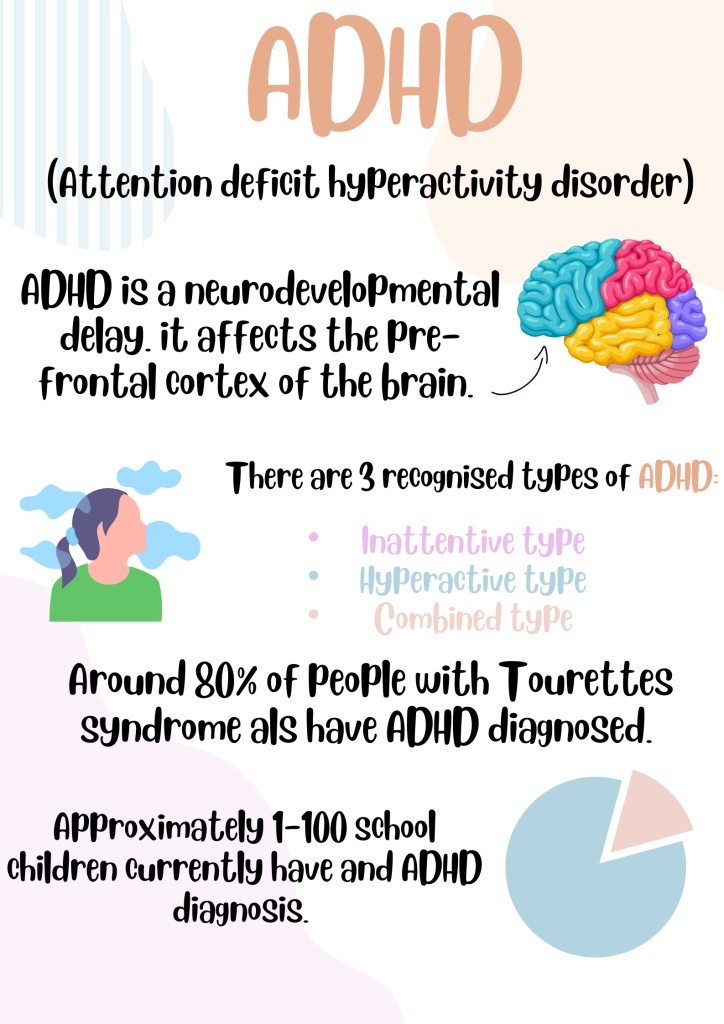Attention Deficit Hyperactivity Disorder (ADHD) is a neurodevelopmental disorder characterized by repeated patterns of hyperactivity, impulsivity, and inattention that significantly impair daily functioning. Despite the fact that the behavioral signs of ADHD have long been recognized, our understanding of the underlying brain circuits is continually growing. The intricate relationships between many brain regions, neurotransmitter systems, and genetic factors that contribute to the development of ADHD have been made clearer by advances in neuroscience. This article explores the neuroscience of ADHD, covering the latest findings and their implications for diagnosis, treatment, and public perception of this common disorder.
Neural Circuits and Brain Regions Linked to ADHD
Important new understandings of the neurological underpinnings of ADHD have been provided by research using neuroimaging techniques such as functional magnetic resonance imaging (fMRI) and positron emission tomography (PET). One of the most important findings is the disturbance of brain networks associated with motor activity, impulse control, and attention. Important brain regions linked to ADHD include the cerebellum, basal ganglia, anterior cingulate cortex (ACC), and prefrontal cortex (PFC).
The prefrontal cortex (PFC), more especially the dorsolateral prefrontal cortex (DLPFC) and the ventrolateral prefrontal cortex (VLPFC), has a major impact on executive functions such as working memory, cognitive regulation, and decision-making. Dysfunction in these areas has been connected to the deficits in sustained attention and impulse control observed in ADHD patients.
The structures that comprise the basal ganglia, which regulate motor behavior and reward processing, include the striatum and the nucleus accumbens. Dopaminergic transmission alterations in the basal ganglia have been connected to the impulsivity and hyperactivity that define ADHD.
The cerebellum has long been known for its role in motor coordination, but it has also been connected to cognitive functions and attentional control. It has been demonstrated that the structure and connectivity of the cerebellum are aberrant in people with ADHD, which may suggest that the cerebellum plays a role in the pathophysiology of the disorder.
The ACC is associated to error monitoring and conflict resolution, and individuals with ADHD exhibit altered activity and connection patterns in this area. Dysfunction in the ACC may be linked to issues with appropriately allocating attentional resources and inhibiting inappropriate emotions.
Neurotransmitter Systems: Beyond Dopamine
ADHD and dopamine have long been associated. This neurotransmitter plays a role in motor control, motivation, and reward processing. The dopamine hypothesis states that a disturbance in dopamine signaling, namely in the mesocorticolimbic circuit, is one of the primary causes of the symptoms associated with ADHD. Genetic studies have connected variations in the genes that produce dopamine transporters and receptors to an increased risk of ADHD.
However, norepinephrine, serotonin, and glutamate are also involved in the neurobiology of ADHD, making dopamine not the only neurotransmitter system. Drugs that block norepinephrine reuptake are useful in treating ADHD because norepinephrine plays a role in the regulation of arousal and attention. Impulsivity and emotional dysregulation, two indicators of ADHD, have been linked to serotonin deficit. Glutamate, the primary excitatory neurotransmitter in the brain, affects synaptic plasticity and might be involved in the ADHD-related cognitive impairments.
Genetic and Environmental Factors
It is commonly known that ADHD is a highly heritable disorder, with 70–80% of the variation in ADHD liability assumed to be accounted for by genetic factors. Genome-wide association studies (GWAS) have identified a large number of genetic risk loci associated with ADHD, many of which are connected to brain development, dopamine transmission, and synaptic function. Nevertheless, ADHD is recognized as a polygenic condition, indicating that a small number of genes contribute to the overall risk.
In addition to genetic considerations, environmental factors also play a key role in shaping the risk and severity of ADHD. Prenatal exposure to maternal smoking, alcohol drinking, or drug use has been linked to an increased risk of ADHD. Adverse childhood experiences, such as early trauma, neglect, or persistent stress, can also result in signs of ADHD. Understanding the interplay between genetic predispositions and environmental factors is crucial to deciphering the complex etiology of ADHD.
Effects on Diagnosis and Treatment
The neurological understanding of ADHD has a profound impact on both diagnosis and treatment. Neuroimaging biomarkers may aid in the objective evaluation of ADHD and help distinguish it from other psychiatric disorders with similar symptoms. For example, quantitative assessments of the anatomy and physiology of the brain can improve the accuracy of diagnosis when combined with traditional behavioral assessments.
Furthermore, as our knowledge of the neurochemical underpinnings of ADHD has grown, pharmacological medications that directly target specific neurotransmitter systems have been created. Stimulant medications that enhance dopamine and norepinephrine transmission, such as amphetamine and methylphenidate, are among the most effective treatments for ADHD. Non-stimulant medications like atomoxetine and guanfacine act on the norepinephrine and noradrenergic receptors to help those who are intolerant of the adverse effects of stimulants or who do not respond to them.
In addition to medication, behavioral therapy and psychosocial support are critical for managing symptoms of ADHD and improving functional outcomes. School modifications, parent education, and cognitive-behavioral therapy (CBT) can help individuals with ADHD become more organized, learn coping techniques, and perform better academically.
Last Words
The complex interplay of genetic, neurochemical, and environmental factors that defines the neurobiology of ADHD is responsible for the disorder's varied manifestation in individuals. Thanks to advancements in systems neuroscience, molecular genetics, and neuroimaging, we now have a deeper knowledge of the etiology and pathophysiology of ADHD. More customized methods to diagnosis and therapy are now possible as a result of this.
In the future, interdisciplinary research initiatives involving neurology, clinical psychology, and genetics will be necessary to solve the remaining mysteries underlying ADHD and provide more tailored treatments. By comprehending the brain mechanisms underlying ADHD, we may reduce the stigma associated with the condition and assist those affected by it thrive in both social and academic contexts.


No comments yet